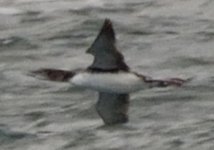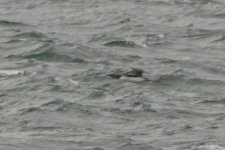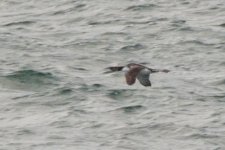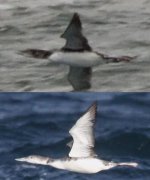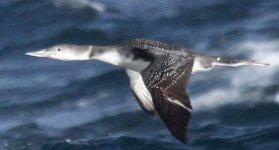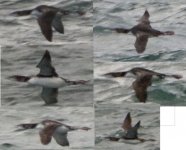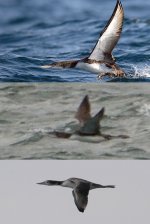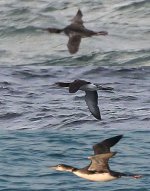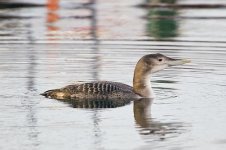chris butterworth
aka The Person Named Above
Fair point (and always question everything) but the bill is pale in each photo.
Winter GND's have pale ( grey ) bills.
[*]Length of the bill
There is an overlap between GND and WBD.
[*]Straight culmen
I don't think you can be 100% sure of the culmen shape, or the gonydeal angle ( a more important discriminant feature ) from the photos.
[*]Angular head shape
Both species can show equally angular head shapes. In fact all Divers, except for Red-throated, often raise the feathers over the top of the forehead / front of the crown producing an 'angular head shape'.
[*]Leg size
Both large Divers have large feet but, unless the views are ideal / the two species are seen in flight together, it's a variable feature due to how the toes are held.
[*]Head colour
The head and, more importantly, the sides of the neck, look equally as dark as the upperparts. GND can often show a fairly large pale area around the eye ( depending on the age ) which can make the 'face' look rather 'open'. Having said that juvenile WBD [/I] can have a very pale head and neck ( but it's both and would be obvious in the photos ).
The dark area at the base of the upper mandible is feathering.
Winter WBD have a dark culmen like GND. GND have a dusky tip to the bill, but this is often very difficult to see in less than ideal conditions.




